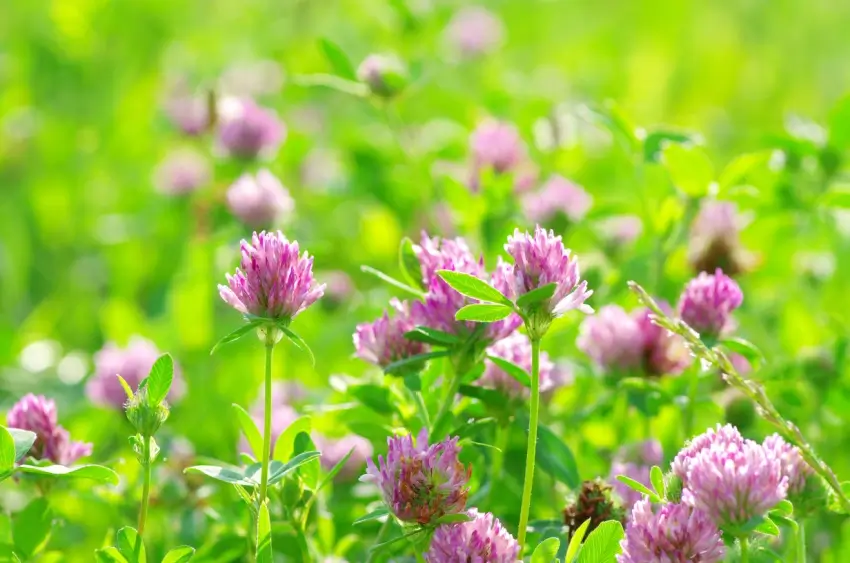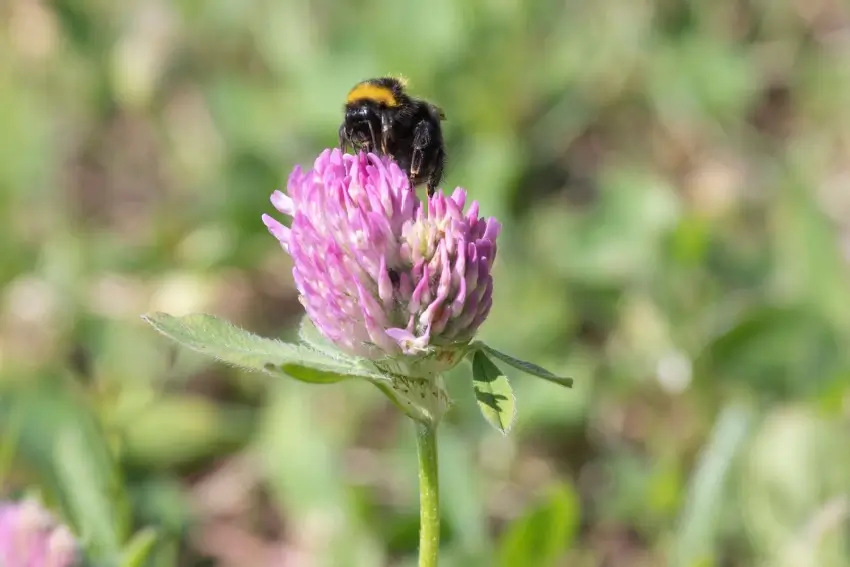Red Clover: A Natural Marvel for Your Lawn and Garden

Are you looking for an eco-friendly, low-maintenance alternative to grass for your lawn? Meet red clover. This beautiful and easy-to-grow plant is a popular cover crop for gardeners and farmers throughout the country but can also serve as a hardy lawn alternative. It can also be an excellent option if you need to rehab weak, overworked soil.
Table of Contents:
What Is Red Clover?
A short-lived perennial, red clover is actually part of the legume family. It’s prized for its low-maintenance needs and ability to nourish weak soil back to health. One of its most striking characteristics is its rich pink and purple flowers, which rise on tall stems and can give your lawn the appearance of a flower-strewn meadow.
The Natural Habitat of Red Clover
Where does red clover grow? This plant can survive a variety of different climates but does best in hardiness zones four through eight. It enjoys cooler weather and is found in many parts of the Northern United States and the Midwest. Red clover prefers soil with a neutral pH but can also tolerate acidic soils.
What Are the Benefits of Red Clover?
Red clover has many potent benefits, especially if you’re looking for a lawn that requires less time and care.
A Unique Beauty

During its flowering stage, red clover can turn your lawn into a carpet of gently bobbing pink and purple flowers. It truly is a beautiful sight and can add a unique flavor to your landscape.
Low Maintenance
This fast grower can tolerate many different types of soil and climate conditions. Red clover requires less frequent mowing, watering, and fertilizing than traditional turf grass, saving you a lot of time and effort on lawn chores over the years.
Drought Tolerant
Droughts are becoming more common throughout the United States. Red clover possesses a deep taproot system that can pull moisture from deeper layers in the soil, allowing it to tolerate droughts better than turfgrass and many other ground cover options.
Attractive To Pollinators

Pollinators are critical to maintaining a healthy and holistic ecosystem. Red Clover earned the nickname “bee bread” for a reason. It attracts many different pollinators, including bees and butterflies.
Growth and Life Cycle of Red Clover
If you’re thinking of creating a red clover lawn or planting red clover ground cover, it’s important to understand this plant’s full life cycle.
It’s generally a good idea to plant your red clover seeds in the spring, from early April to mid-May. Make sure the soil is no less than 50 degrees Fahrenheit and moist. If all goes according to plan, seedlings should emerge in seven to 10 days after planting.
During the first year of life, your red clover will focus on growing its root system and leaves. You won’t see any flowers this year, but the plant should grow to a height of six to eight inches. During the winter, your red clover will go dormant and wake back up in spring.
In year two, your red clover will begin producing its beautiful flowers in early spring, with flowering continuing throughout the summer. The flowers will attract pollinators, and after pollination, the clover will develop seeds in its flower head, which will drop to the ground and germinate.
By year three, most red clover plants will complete their life cycle and die. However, that doesn’t mean you have to start over. The seeds produced during the previous seasons should be sprouting, ensuring you always have a red clover lawn.
The Practical Applications of Red Clover as Ground Cover
Even if you don’t intend to create a red clover lawn, you can use it as a cover crop to restore poor-quality soil. All varieties of clover, including red clover, are known as “nitrogen fixers.” Without getting too far into the “weeds,” special nodules on the roots convert atmospheric nitrogen into ammonia, a great fertilizer.
Additionally, red clover’s deep roots can improve your soil’s structure by breaking up compacted soil. This can improve drainage and aeration. At the end of the clover’s growing season, you can even use it as “green manure” by tilling it into your soil.
But wait, before you turn over all your clover, take a bite. Clover leaves and flowers are edible. In fact, you can use clover leaves just like spinach. You can even dry red clover flowers and make them into tea. Some people believe red clover possesses medicinal benefits that can ease the symptoms of menopause, arthritis, and other health issues.
Get Expert Help Creating Your Red Clover Lawn
The benefits of red clover are substantial, especially if you need to rejuvenate your soil. That said, planting and managing red clover isn’t always easy. It can be susceptible to a number of pests and diseases and may even grow out of control if you aren’t careful.
Before switching up your lawn, contact us at The Grounds Guys®. We can test your soil and determine if you would be a good candidate for a red clover lawn based on your location, soil health, and needs. Our local team can also plant and care for your clover lawn and help remediate your soil in other ways if needed. Your local The Grounds Guys team is also backed by our Neighborly Done Right Promise™. This promise means you can expect the best customer service on every visit.
Ready for red clover, red clover to come on over? Request a free estimate today.
 Click to call
Click to call


